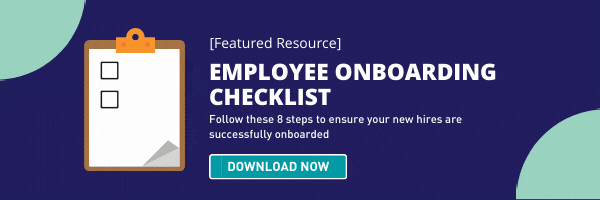HR News & Education
Check out the latest news and resources for small businesses covering topics such as human resources, employee engagement, and management.
How to Plan for Wage Increases in 2022
.jpg?width=8192&name=pexels-monstera-5849573%20(1).jpg)
According to a November 2021 survey conducted by The Conference Board, businesses are projecting a 3.9% increase in wage costs. While participants in this particular survey were executives from large organizations, small to medium-sized businesses can expect similar increases in wage costs.
In light of this trend, it is vital that you take steps to prepare. Failing to plan for these wage increases can negatively impact profit margins and may even disrupt your revenue stream entirely. Fortunately, there are a few things that you can do to prepare your small business for wage increases in 2022.

What Is Driving Wage Increases?
Before we discuss how you can prepare for the impending rise in wage costs, it is important to understand what is fueling these increases in the first place. As with most economic issues, there is no single answer to this emerging problem. Wage increases are linked to several interrelated factors, including:
Minimum Wage Increases
Beginning in 2022, many states are launching the first of several planned increases to the minimum wage. If your business operates in one of these states, then you will be required to up the pay rate of minimum wage employees annually over the next 3 to 5 years.
The end goal is to raise the minimum wage to at least $15 per hour. While these rate increases are intended to improve the lives of workers, they will likely fuel inflation and place added strain on small businesses.
Inflation
As inflation continues to rise, non-minimum wage employees will expect to see increased salaries or hourly pay rates as well. This desire for higher wages will be enhanced by compression issues.
In short, pay compression occurs when entry-level employees receive sudden wage increases, which lessens the gap between them and more experienced staff members.
Navigating compression issues can be challenging, as failing to do so can cause seasoned team members to seek employment elsewhere. Conversely, significantly increasing wages across the board may not be economically feasible for your business.
A Worker Shortage and Skills Gap
Over the last few years, SHRM, or the Society for Human Resource Management, has been warning businesses of the growing skills gap. A skills gap occurs when the available worker pool does not possess the talents necessary to fill vacant positions. The impacts of the skills gap are compounded by a general shortage of job seekers.
How Your Business Can Prepare
While rising wage costs will be accompanied by a host of new challenges, this development also provides you with a prime opportunity to streamline internal operations and strengthen your business model. In order to prepare for these pending wage increases, we recommend that you:
Focus on Hourly Pay
Hourly payment strategies will be a valuable ally as you seek to mitigate the impacts of rising wage costs.
You should avoid hiring employees on a salary basis whenever possible, as this approach provides minimal fiscal flexibility to your small business. Planning and monitoring your payroll is much easier when the majority of employees are compensated via an hourly payment system.
In addition, it is vital that you stay apprised of any impending changes to minimum wage laws in your state. If your business is found to be out of compliance, then you may be subject to hefty fines and other civil penalties.
Implement Segmented Changes When Possible
If you employ or are seeking to hire entry-level employees, changes to minimum wage laws may create compression between these new staff members and more seasoned workers. When this occurs, it may be tempting to please everyone by rolling out across-the-board pay raises. However, this is rarely the right approach.
Instead, we recommend implementing changes in manageable stages. For instance, you could offer a higher wage to your current top performers and newcomers to the organization.
This approach will help you bring in much-needed staff members without alienating top talent. It is also far less financially strenuous than raising your entire team’s hourly pay rate. As finances allow, you can offer wage increases to other employees in order to alleviate any compression issues.
Do Not Neglect the Employee Experience
Modern employees are increasingly concerned with things like work/life balance and business culture. They are also extremely conscious of pay disparity and other wage-related concerns. Therefore, you must keep them in the loop anytime you alter or modify your payroll practices.
Reevaluate Payroll Management Practices
Lastly, we recommend that you reevaluate your current payroll management practices, especially if you are tracking wages and similar information manually. By modernizing the way you handle payroll, you can save time, cut costs, and gain a better understanding of your company's financial health.
Not sure where to begin? Why not start with Symply? Our full-service payroll platform was designed with small and growing businesses in mind. These user-friendly tools can streamline the way you manage payroll, help you perform HR tasks, and even include electronic onboarding tools.
Ready to learn more? If so, connect with our team today or check out our simple, transparent pricing model.

